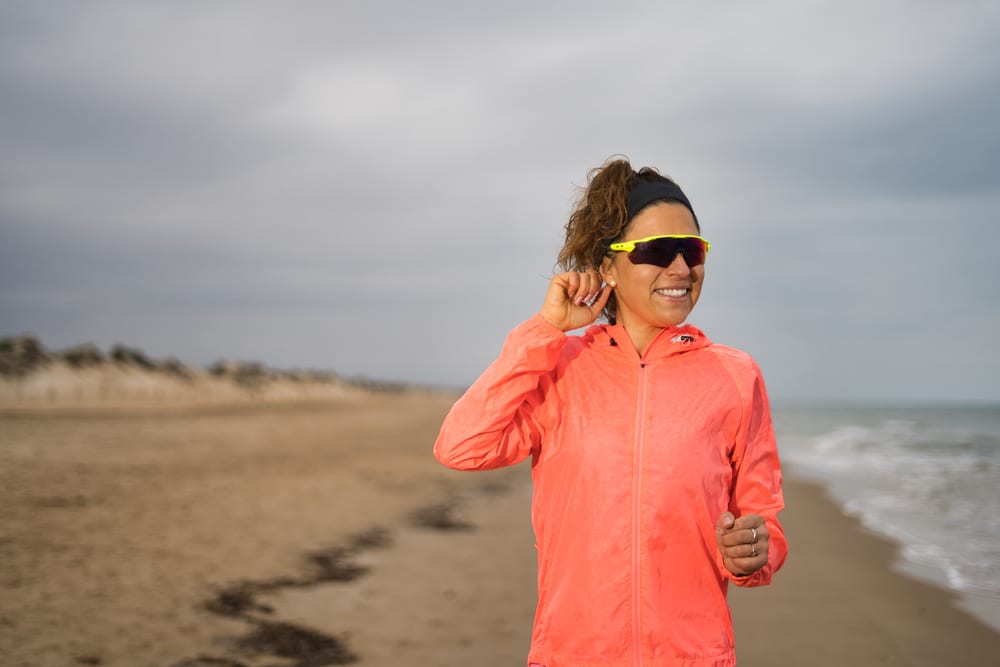Among the three major types of skin cancer, melanoma is the most serious. There are a few types of melanoma and unfortunately, it can develop on any area of the body, including your eyes.
Melanoma in the eye (also known as ocular melanoma) is very rare, but it's something to be mindful of when creating a sun protection and cancer prevention plan. Here's what you need to know about melanoma of the eye and how to reduce your risk.
How Melanoma in the Eye Develops
First, what is melanoma? This is a type of cancer that occurs when melanocytes, cells that produce melanin—a pigment found in the skin, eyes, and hair—become damaged and form cancerous tumors that may spread throughout the body. It's usually found in places that get a lot of sun exposure, but it can form in or spread to places like your fingernail beds, internal organs, and eyes.
As noted by the Ocular Melanoma Foundation, it's rare for melanoma to originate in the eyes, and ocular melanoma only accounts for about 5 percent of total melanomas. Most cases of ocular melanoma usually start as skin cancer that spreads from another part of the body.
Approximately 2,500 people in America are diagnosed with ocular melanoma each year, according to the National Organization for Rare Disorders. It can affect anyone, regardless of ethnicity, age, or sex, although it's more likely to occur in older adults and people with fair skin. It's also estimated to affect more men than women.
According to the American Academy of Ophthalmology, other risk factors of ocular melanoma include:
- Moles in or on the eye
-
Genetic likelihood of abnormal moles
-
Light-colored eyes
-
Abnormal pigmentation on the eyelids
-
Increased exposure to natural or artificial sunlight
Remember, people without these features can still develop the disease. Identifying risk factors can help medical professionals, like your Dermatologist, to better predict and prevent serious health concerns.
Signs and Symptoms
Ocular melanoma usually occurs in a part of the eye—the middle layer called the uvea—that you can't see. This makes it difficult to detect. People who develop melanoma of the eye may not experience symptoms until it becomes more advanced. Still, there are a few symptoms to be aware of.
Check with your doctor if you notice any of the following potential signs of ocular melanoma:
-
Loss of peripheral vision
-
Flashes, specks, or floaters in your vision
-
Worsening or blurry vision
-
Dark spots on the iris
-
Change in the pupil shape
-
Bulging eyes and redness
These symptoms aren't exclusive to ocular melanoma, however. Some of these signs are related to other eye diseases or could be a normal part of aging.
If you have any of these symptoms, your doctor may refer you to a specialist or order laboratory tests.
Preventing Melanoma
Skin cancer is prevalent, but it's often preventable, too. It mostly affects areas heavily exposed to sunlight, like your arms, legs, back, and face, but it can also form in more obscure places—or spread to them later on.
Melanoma in the eye is especially rare, but it can be fatal, so prevention is key. Unlike the skin, you can't apply sunscreen to your eyes! That's why it's important to lean on eye protection while outdoors.
Mount Sinai recommends wearing sunglasses with ultraviolet (UV) protection and getting an annual eye exam. For maximum protection, opt for wraparound sunglasses with at least 99 percent UVA and UVB absorption, suggests the American Cancer Society. You can also wear a wide-brimmed hat, seek shade, and stay out of direct sunlight between the hours of 10 a.m. and 4 p.m.
You can also protect the skin around your eyes, like your eyelids, to help prevent eye-related cancer. Apply a face-safe sunscreen around your eyes to reduce the risks of eyelid cancer. The EltaMD UV Clear Broad-Spectrum SPF 46 is suitable for sensitive skin, making it safe to use around the delicate eye area.
